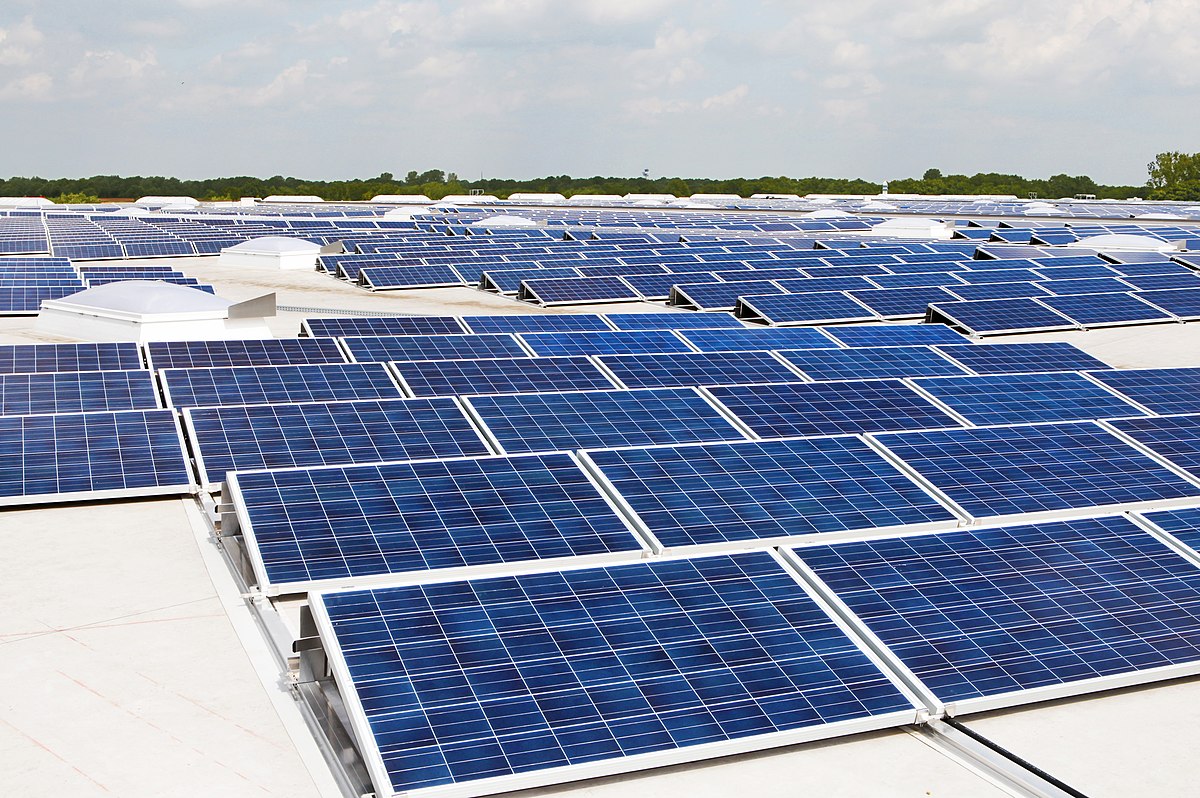Fascinating 40 Facts About Solar Energy
Solar energy, derived from the radiant light and heat of the sun, has been harnessed by humans for millennia.
As a renewable and sustainable energy source, solar power plays a crucial role in our quest for cleaner and more efficient ways to meet our energy needs.
Here are fascinating 40 facts about solar energy that showcase its significance, potential, and impact on our world:

- Abundant Resource: The sun emits an astonishing amount of energy every second, far more than humanity could ever consume. It’s estimated that the energy reaching Earth’s surface from the sun in just one hour could meet global energy demands for an entire year.
- Renewable Energy Source: Solar energy is renewable, meaning it’s continually replenished and will never run out as long as the sun shines.
- Carbon-Free Power Generation: Unlike fossil fuels, solar energy production emits no greenhouse gases or harmful pollutants, making it a clean and environmentally friendly energy source.
- Solar Panels Efficiency: The efficiency of solar panels, which convert sunlight into electricity, has been steadily improving. Modern solar panels can convert around 20% of the sunlight they receive into usable electricity, with some experimental panels reaching efficiencies of over 40%.
- Photovoltaic Effect: Solar panels work through the photovoltaic effect, where photons of light knock electrons free from atoms, generating a flow of electricity.
- Solar Energy Potential: The amount of solar energy that reaches Earth’s surface each year is approximately 10,000 times greater than the total energy consumption of humanity.
- Solar Energy Storage: One of the challenges of solar energy is storage for use when the sun isn’t shining. Advancements in battery technology, like lithium-ion batteries, are making solar energy storage more efficient and cost-effective.
- Off-Grid Solutions: Solar power can provide electricity to remote areas far from the grid, enabling access to electricity in regions where traditional power infrastructure is impractical or unavailable.
- Solar Farms: Large-scale solar installations, known as solar farms or solar parks, can generate massive amounts of electricity. These farms consist of thousands of solar panels spread over acres of land.
- Silicon Dominance: Most solar panels today are made from silicon, which is abundant and relatively inexpensive. However, research into alternative materials such as perovskite and thin-film solar cells is ongoing and holds promise for further efficiency improvements.
- Solar Energy and Water: Unlike many other forms of energy generation, solar power requires very little water for operation, making it especially valuable in arid regions or during droughts.
- Space Exploration: Solar panels are widely used in space exploration to power satellites, spacecraft, and even entire space stations. The uninterrupted sunlight in space makes solar power an ideal energy source for these missions.
- Solar Energy Jobs: The solar energy industry is a significant source of employment, with jobs ranging from manufacturing and installation to maintenance and research. As the industry continues to grow, so does its workforce.
- Net Metering: Many regions offer net metering programs, allowing solar energy system owners to sell excess electricity they generate back to the grid, offsetting their utility bills.
- Solar Energy Tax Credits: Governments around the world often provide tax credits and incentives to encourage the adoption of solar energy systems, making them more affordable for homeowners and businesses.
- Solar Thermal Energy: In addition to generating electricity, solar energy can also be used for heating water and spaces through solar thermal systems, which capture the sun’s heat directly.
- Solar Desalination: Solar energy can power desalination plants, converting seawater into fresh water through a process known as solar desalination, which has the potential to address water scarcity issues in coastal regions.
- Solar-Powered Transportation: Solar energy can be used to power various modes of transportation, including cars, buses, boats, and even airplanes, through solar panels integrated into their designs.
- Solar Energy in Agriculture: Solar energy can benefit agriculture by providing power for irrigation systems, greenhouse heating, and livestock operations, helping to increase productivity and efficiency.
- Solar Energy in Architecture: Architects are increasingly incorporating solar panels into building designs, creating energy-efficient structures known as “solar buildings” or “solar architecture.”
- Solar Energy and Wildlife: Solar farms can coexist with wildlife habitats, and some are designed to benefit local ecosystems by providing shade, shelter, and opportunities for vegetation growth beneath and around the panels.
- Solar-Powered Gadgets: From solar-powered calculators to backpacks with built-in solar panels for charging electronic devices, solar energy is powering an increasing array of gadgets and accessories.
- Solar Energy in Disaster Relief: Portable solar generators and chargers play a vital role in disaster relief efforts, providing electricity for lighting, communication devices, medical equipment, and other critical needs in areas affected by natural disasters.
- Solar Energy and Education: Solar energy projects in schools and educational institutions serve as valuable teaching tools, raising awareness about renewable energy and inspiring the next generation of innovators and environmental stewards.
- Solar Energy in Developing Countries: Solar energy technologies offer unique opportunities for sustainable development in developing countries, providing access to electricity, improving healthcare, and fostering economic growth.
- Solar-Powered Water Purification: Solar energy can power water purification systems, making clean drinking water more accessible in remote or underserved communities without reliable access to electricity.
- Solar-Powered Streetlights: Solar-powered streetlights reduce energy costs and carbon emissions in urban areas while providing reliable lighting for pedestrians and motorists, especially in areas with unreliable or nonexistent grid electricity.
- Solar Energy and Climate Change Mitigation: By reducing reliance on fossil fuels and lowering greenhouse gas emissions, solar energy plays a crucial role in mitigating climate change and its adverse effects on the environment.
- Solar Energy and Health Benefits: The shift towards solar energy can lead to significant health benefits by reducing air pollution and associated respiratory illnesses caused by burning fossil fuels for electricity generation.
- Solar Energy and Economic Growth: The widespread adoption of solar energy creates jobs, stimulates economic growth, and reduces dependence on imported fossil fuels, contributing to long-term energy security and prosperity.
- Solar-Powered Cooking: Solar cookers and ovens harness the sun’s energy to cook food, offering a clean, sustainable, and cost-effective alternative to traditional cooking methods that rely on firewood or fossil fuels.
- Solar Energy and Grid Resilience: Distributed solar energy systems, such as rooftop solar panels, enhance grid resilience by decentralizing power generation and reducing the risk of widespread outages during natural disasters or grid failures.
- Solar Energy and Energy Poverty: Solar energy initiatives can help alleviate energy poverty by providing affordable electricity to underserved communities, improving living standards, and empowering individuals and households.
- Solar Energy and Environmental Conservation: Solar energy development can be compatible with environmental conservation efforts, especially when sited on degraded or low-value lands, minimizing impacts on ecosystems and wildlife habitat.
- Solar Energy and Energy Independence: Investing in solar energy reduces dependence on imported fossil fuels, enhances energy independence, and strengthens national security by diversifying energy sources and reducing vulnerability to geopolitical risks.
- Solar Energy and Social Equity: Equitable access to solar energy benefits all segments of society, including low-income households and communities of color, by reducing energy costs, creating job opportunities, and promoting environmental justice.
- Solar-Powered Air Conditioning: Solar-powered air conditioning systems use solar energy to cool buildings, reducing electricity demand during peak hours and lowering carbon emissions associated with traditional cooling methods.
- Solar Energy and Innovation: Ongoing research and innovation in solar energy technologies, such as perovskite solar cells, bifacial panels, and solar paint, hold the promise of further efficiency improvements and cost reductions in the future.
- Solar Energy and Longevity: Solar energy systems have long lifespans, with solar panels typically lasting 25 years or more and requiring minimal maintenance, making them a reliable and durable investment for homeowners and businesses.
- Solar Energy and a Sustainable Future: As we transition towards a more sustainable energy future, solar energy will play an increasingly vital role in powering our homes, businesses, and communities, helping to create a cleaner, greener, and brighter world for generations to come.
- Solar Energy’s Role in Grid Integration: Within the realm of energy systems, the integration of solar energy is pivotal. As we embrace the transition towards sustainable power sources, understanding how solar energy integrates into existing grids becomes crucial. These 40 facts about solar energy illuminate the complexities and opportunities inherent in this integration process, guiding policymakers, engineers, and stakeholders towards a more resilient and sustainable energy future.
- Solar Energy’s Contribution to Circular Economy: The principles of a circular economy are increasingly relevant to the solar energy sector. Through recycling initiatives and innovative resource management strategies, the industry aims to minimize waste and maximize the lifespan of solar components. Embracing all the 40 facts about solar energy in the context of circular economy principles highlights the sector’s commitment to sustainability and responsible resource stewardship.
- Health Benefits of Solar Energy Adoption: Beyond its environmental advantages, the widespread adoption of solar energy brings significant health benefits to communities worldwide. By displacing fossil fuel combustion, solar power reduces air pollution and mitigates the harmful health effects associated with particulate matter and other pollutants. Recognizing these comprehensive 40 facts about solar energy underscores the integral role of clean energy in safeguarding public health and improving overall well-being.
- Solar Energy’s Contribution to Energy Equity: Access to clean and affordable energy is a fundamental human right. Solar energy initiatives, including community solar projects and off-grid solutions, play a pivotal role in advancing energy equity and empowering underserved communities. Integrating all these 40 facts about solar energy into discussions on energy access highlights the transformative potential of solar power in promoting social justice and economic empowerment.
- Technological Innovation in Solar Energy: The rapid pace of technological innovation is reshaping the solar energy landscape. From advancements in photovoltaic cell efficiency to breakthroughs in energy storage technologies, here the 40 facts about solar energy showcase the dynamic evolution of solar power solutions. Embracing innovation is essential to unlocking the full potential of solar energy and accelerating the transition to a sustainable energy future.
- Solar Energy’s Alignment with Environmental Conservation: As we confront global environmental challenges, the conservation of natural resources is paramount. Solar energy development, when undertaken responsibly, can coexist harmoniously with efforts to preserve biodiversity and protect ecosystems. Incorporating these very important 40 facts about solar energy into conservation discussions underscores the industry’s commitment to environmental stewardship and sustainable development.
- Solar Energy’s Contribution to Energy Security: Diversifying energy sources is key to enhancing energy security and reducing geopolitical risks. Solar energy, with its abundant and locally available resource, strengthens energy independence and resilience. Understanding “40 facts about solar energy” is essential for policymakers and energy planners seeking to bolster national security and promote energy sovereignty.
- Educational Opportunities in Solar Energy: Education plays a vital role in fostering a culture of sustainability and innovation. Solar energy initiatives offer valuable educational opportunities for students and communities to learn about renewable energy technologies and environmental conservation. Embracing these fascinating 40 facts about solar energy in educational programs empowers future generations to drive positive change and shape a more sustainable world.
- Global Collaboration for Solar Energy Transition: Addressing the complex challenges of climate change and energy transition requires global cooperation and collaboration. By sharing knowledge, resources, and best practices, the international community can accelerate the adoption of solar energy and advance collective efforts towards a sustainable future. Recognizing these 40 facts about solar energy fosters a shared understanding and commitment to collaborative action on a global scale.
In conclusion, solar energy represents a remarkable solution to many of the challenges facing our planet,
offering clean, renewable, and abundant power for a sustainable future.

As technology advances and costs continue to decline, the widespread adoption of solar energy will undoubtedly accelerate,
ushering in a new era of clean energy prosperity and environmental stewardship.




Leave a Reply